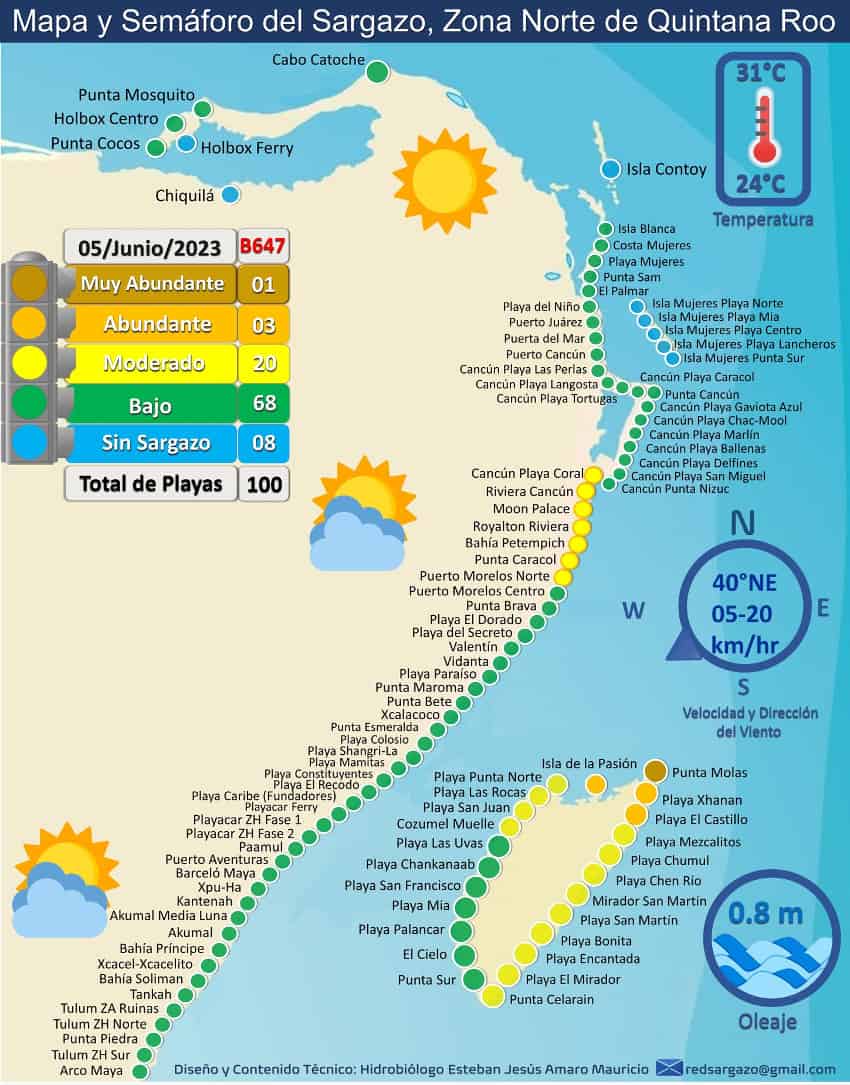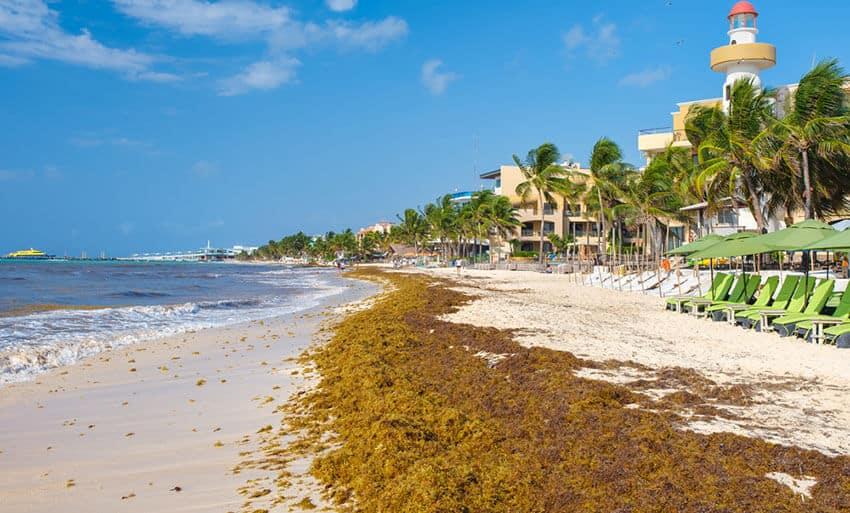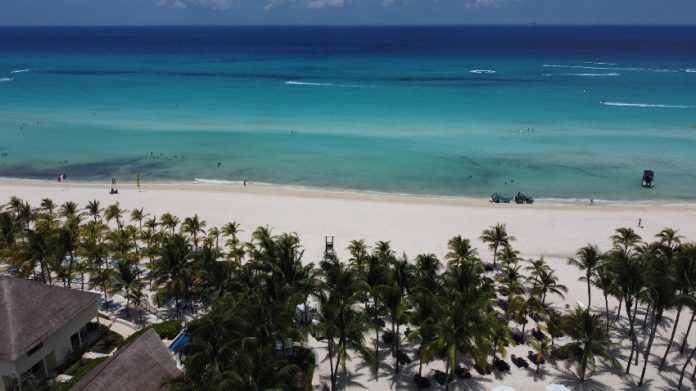Quintana Roo beaches registered low levels of sargassum on Monday, a local beach monitoring network reported.
Sargassum, a yellowish-brown macroalgae (seaweed) which can release a foul odor, typically makes landfall around May and peaks in June and July. This year, however, it arrived as early as April.

According to the monitoring network, there are low quantities of the seaweed in the northern part of the state, with the exception of Coral Beach, Riviera Cancun, Moon Palace, Royalton Riviera, Petempich Bay and Punta Caracol, all of which report moderate presence of sargassum.
Of 100 beaches monitored by the Quintana Roo Sargassum Monitoring Network (RMSQR), 68 are currently listed as “green” or low sargassum, and eight qualify for the “blue” sargassum free advisory.
In the last two weeks of May, the Navy (Semar) reported collecting 3,240 tons of sargassum off the coast of Quintana Roo.
According to The New York Times, the Great Atlantic Sargassum Belt (GASB) has grown abnormally since 2011, in large part because of excessive, nutrient-rich overflow from the Congo, Amazon and Mississippi rivers. In March 2023, the GASB grew to an estimated 13.5 million metric tons of seaweed according to a study released in April by the University of Florida.

However, in its May 30 bulletin, the University of South Florida’s Optical Oceanography Laboratory reported that the GASB, which in April measured 8,000 kilometers in width, shrank 15% in size during May – a decrease that “had never happened before at this time of year,” researchers wrote.
But the reduction was not uniform: though sargassum presence fell sharply in the eastern Atlantic and the Caribbean, it rose slightly in the Central West Atlantic and the Gulf of Mexico.
With reports from Quadrantin Quintana Roo, The New York Times, La Lista and El Economista
